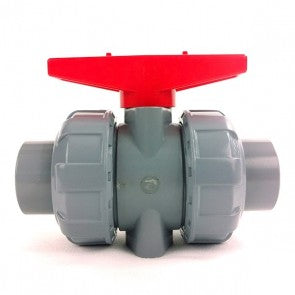Valves are used in the home to regulate and stop the flow of water. There are various types of valves that are used in residential piping systems, and each type has its best application. Most of the valves that you will find in a household’s plumbing system are part of the overall water supply system. They are used to control the flow of pressurized water coming from water utilities or from a private well. How the valve is designed determines how water flows into the home and if it is used for adjusting the flow or if it is used only for turning the water on or off.
Location and Function of Common Residential Valves
There are several areas in the home that require the use of water valves. You’ll find valves used for water flow in showers and bathtubs, sinks, water heaters, and outdoor faucets. In each of these areas, it’s important that the right type of valve is used.
Bathtub and Shower Valves
The valves that you typically find in the bathroom for the tub and shower are pressure balancing valves or thermostatic valves.
Pressure balancing valves are the most common type of household valve. This type of valve has a single control and a handle. When you turn the tap on, water comes out at a consistent pressure. If you turn the valve to the right, the water stays cold, and if you turn it to the left, the water gets hotter. There is usually a diverter that allows water to be switched from tub to a shower. A built-in volume control allows you to adjust the water pressure as needed.
Thermostatic valves follow right behind pressure balancing valves when it comes to showers and tubs. This type of valve has a thermostatic system that allows you to have greater control of the water temperature – even before you turn on the tap. You’ll usually find that this type of valve has a temperature dial on it that to allow users to set a specific temperature for the water.
Under the Sink Valves

The valves that are located under your sinks are typically stop-valves. They are designed to completely block the flow of water that is coming from your water utility or well. You’ll find stop-valves under sinks, behind toilets, and at the water supplies of other plumbing fixtures.
Stop-valves can have different types of mechanisms inside – ball, globe, gate, etc. They are preferred over alternative valves because a stop-valve typically causes less flow restriction.
Water Heater Valves
Your water heater will have a fixture shutoff valve that is used to control the flow of water into the water heater. With a fixture shutoff valve, you are able to stop the flow of water to the fixture so you can work on it without having to shut off the water to the entire house.
Main Water Pipe Valves
Gate valves are used to control the flow of water with an internal gate that is opened or closed by turning a knob. They are designed to be all the way off or all the way on, you shouldn’t use them to adjust water pressure as they are not designed for that and will wear out faster if you do.
Gate valves aren’t typically used in residential plumbing and are seen more often in industrial applications. However, you may find a gate valve controlling the main water pipes to your home.
Make Sure to Choose the Right Valve for the Location
There are numerous ways that valves are used in the home. Choosing the right type of valve for the location is essential for each specific application. If you need help selecting the right valve for the job, don’t hesitate to contact us for advice.

